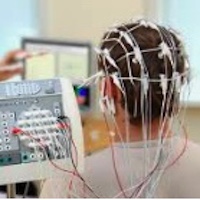Sensitivity of electroencephalogram in the diagnosis of epilepsy among patients attending a neuropsychiatric hospital in Northern Nigeria

Accepted: 12 April 2020
All claims expressed in this article are solely those of the authors and do not necessarily represent those of their affiliated organizations, or those of the publisher, the editors and the reviewers. Any product that may be evaluated in this article or claim that may be made by its manufacturer is not guaranteed or endorsed by the publisher.
Authors
Electroencephalography (EEG) is an essential adjunct in management of epilepsy. While some studies reported that EEG has a high sensitivity in detecting epileptic seizures, others disagree. Therefore, it is important to know sensitivity of this important procedure in our setting. This was a cross-sectional study carried out from 2015 to 2018. Participants were patients attending the outpatient clinic of a psychiatric hospital to achieve care for epileptic seizures. Ethical clearance was obtained prior to the conduct of this study. In addition, informed consent was obtained from each patient or their caregivers. Data analysis was done using SPSS version 20. The study involved 177 participants aged 2-70 years (median = 17 years). The male to female ratio was 2:1. The mean duration of illness was 7.8±5.8 (range = 1-35 years). Sensitivity of EEG was 70.6%. There was no difference between either age, gender or duration of illness and probability of having an abnormal EEG. EEG is sensitive in the diagnosis of epilepsy in our setting. Future studies should focus on factors influencing sensitivity of EEG in diagnosis of epilepsy.
How to Cite
PAGEPress has chosen to apply the Creative Commons Attribution NonCommercial 4.0 International License (CC BY-NC 4.0) to all manuscripts to be published.

 https://doi.org/10.4081/pjm.2020.79
https://doi.org/10.4081/pjm.2020.79



